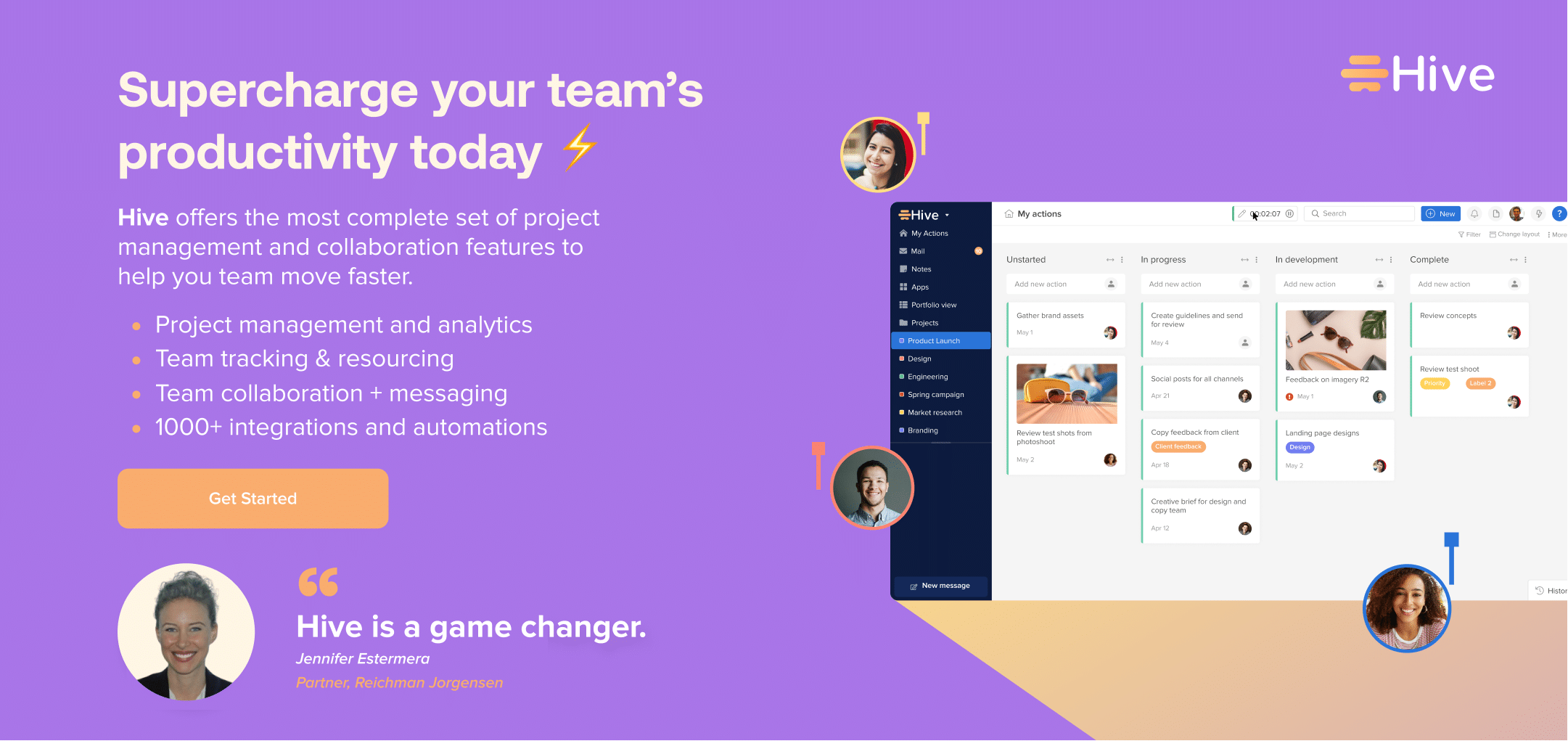Every company needs a business-level strategy to achieve a competitive advantage in a particular market or industry – and those who won’t have them are inevitably doomed to fail. To really get a sense of how one’s company will compete in its chosen market, how it can stand out from competitors, and how it will create value for customers, this kind of plan is imperative to have in place.
Keep reading to learn more about what a business-level strategy is, how to plan and track progress, and how to use project management software like Hive to achieve these goals as soon as possible (for free!).
What is a business-level strategy?
A business-level strategy is an approach that a company takes to compete in its particular market or industry. It focuses on how the organization will create value for its customers, differentiate itself from competitors, and achieve a sustainable way to maintain its momentum. They’re typically developed by senior management and are informed by market research and analysis – and perhaps also by the help of a team devoted to compiling that information.
There are four types of business-level strategies: cost leadership and differentiation, then focused cost leadership and focused differentiation. Cost leadership involves offering products or services at a lower price than competitors. Differentiation involves offering unique or superior products or services compared to competitors. And both focused cost leadership and focused differentiation include offering products or services to a specific market segment at a lower cost or with unique features.
How to plan a business-level strategy
No matter what kind of business-level strategy you’re using, all of them involve several steps, including market research, analysis, and developing a competitive advantage. Here are some key steps for planning a business-level strategy.
1. Define your target market
Having a sense of who you’re marketing to will help channel your efforts. In this step, you’ll attempt to understand your market’s needs and preferences through research. Gather as much data as possible on this group, such as demographics, buying behaviors, and purchasing habits.
2. Analyze the competition
Next, your competitors might already have tried to corner the market, so you should find out what they’re doing and how to do it better. Do a little more research and brainstorm their strengths and weaknesses, including their products or services, pricing strategies, and marketing tactics.
3. Develop a competitive advantage
Based on your market research and analysis, now it’s time to find something that differentiates your company from competitors. Having this winning approach will help fuel your core values and goals going forward. This can include offering lower prices, unique features, or leveraging customer service automation to resolve issues quickly.
4. Choose a business-level strategy
Finally, based on whichever competitive advantage you choose, pinpoint one type of business-level strategy that aligns with your company’s overall objectives. This includes the above options of cost leadership, differentiation, focused cost leadership, or focused differentiation.
How to track progress on a business-level strategy using Hive
Making sure that your business-level strategy stays on track is critical to achieving success, and Hive offers several features that can help teams save a huge amount of time by plotting their approach and staying the course during their business journey.
1. Create a project plan
Using Hive’s Gantt chart feature, create a project plan that outlines the key milestones and tasks required to achieve your business-level strategy. This plan should include timelines, deadlines, and task dependencies.
2. Assign tasks
The most important way to get tasks done is to assign them to the right people, and Hive makes that easy. Hive’s task management feature allows users to assign action items to team members, including notes, attachments, and more, and set deadlines. When these tasks are assigned based on each team member’s strengths and expertise, there’s no telling how productive your team will be.
3. Collaborate and communicate
The hallmark of any good team is staying clear, concise, and consistent – and Hive’s collaboration tools, such as shared notes and comments, will keep team members informed and engaged. Slack integrations are also possible, so you can try different Slack tips and tricks to stay productive and never be out of the loop.
4. Stay on track
Now that your tasks are assigned, and your team is communicating, everything should fall into place, and you can start tracking how your business-level strategy is progressing. To help with this, Hive has a reporting feature that assists in measuring key performance indicators (KPIs) and a new Goals application.
5. Don’t be scared to pivot
Create plans to pivot based on your progress, KPIs, and goals if necessary. Continue to stay up on the latest market research as well, and integrate it into your plan just in case your business-level strategy caters to a rapidly changing market. Reallocating resources and adjusting timelines are also possible ways to pivot.
Business-level strategies don’t have to be intimidating
Business-level strategies can be large and daunting undertakings, but there are easy ways to streamline and hone your efforts into a successful outcome. Hive’s project management software offers a variety of features that can help teams track their progress on their business-level strategy. With integrations, task management, collaboration tools, and reporting features, teams can work together efficiently and effectively toward their objectives and goals.





